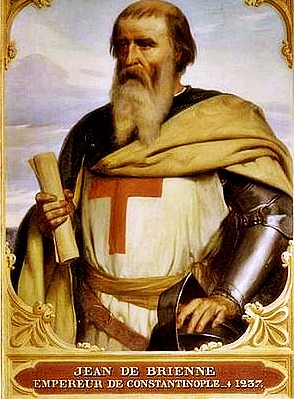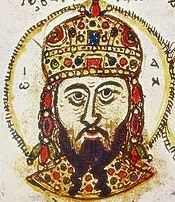
Siege of Constantinople |
year: 12351235-1236 |
| A joint Bulgarian-Nicaean siege on the capital of the Latin Empire | ★ ★ ★ ★ ★ |
|
enemy: Latins
|
location: Constantinople
|
accuracy:
●●●●●
|
|
battle type: Siege |
war: Nicaean-Latin Wars |
modern country:
Turkey |
| ▼ The Byzantines(emperor: John III Doukas Vatatzes) | ▼ The Enemies | |
| Commander: | Emperor John III Doukas Vatatzes | Emperor John of Brienne |
| Forces: | Unknown | Unknown |
| Losses: |
| Background story: |
 Ιωάννης της Βριέννης The Latin Empire of Constantinople was in a difficult position having serious financial problems and being under threat from its neighbors. After the catastrophic defeat of the Despot of Epirus by the Bulgarians at the Battle of Klokotnitsa in 1230, the threat of the Epirotes to the Latin Empire was eliminated, to be replaced by that of Nicaea. Emperor John III Doukas Vatatzes of Nicaea, after his victory at Poimaninon, took back many of the Latin possessions in Asia Minor and continued his success by occupying parts of Greece. Later, he formed an alliance with the Bulgarians, and in 1235 the Nicaeans and Bulgarians launched a joint attack against the Latins of Constantinople. |
The Battle: |
 John III Doukas Vatatzes John of Brienne had only a few men, but the Venetian Duke of the Archipelago (ie of the Duchy of Naxos) Angelo Sanudo sent a naval squadron that managed to relieve the siege from the sea. With only 167 men, John of Brienne faced a Byzantine-Bulgarian force of many thousands in a battle outside the walls and achieved an overwhelming victory, with John, then 65, showing great bravery. This information from Frankish sources is certainly exaggerated, but the fact is that the Latins, with the help of the Venetians, managed to effectively resist the siege. The Venetian fleet withdrew in November 1235 and the siege tightened again. John, in a very difficult position, sent letters to European leaders making desperate appeals for help. In response, at the beginning of 1236 arrived a fleet consisting of ships from the republics of Venice, Genoa and Pisa. It was headed by the Prince of Achaea, Godfrey II Villehardouin, who had brought 100 of his own knights, 300 cross-bowmen and 500 archers. (Villehardouin, like Sanudo, was formally a vassal of the Latin Empire). The Frankish fleet broke the blockade of the city, sank 15 Byzantine ships and entered the Golden Horn. After that, the siege was temporarily lifted. Ivan Assen II and Vatatzes agreed to continue the siege next year, but things turned out differently. After the death of John Brienne in 1237, the Bulgarians canceled the treaty with Vatatzes because of the possibility that Ivan Assen II would become regent of the Latin Empire. Thus the plans for the continuation of the siege and the conquest of Constantinople were thwarted. |
Aftermath: |
| The siege was unsuccessful and a treaty was signed after a new intervention by Sanudo. The Greek advance continued in the following years and gradually the Latin Empire was limited within the walls of Constantinople. |
|
|
